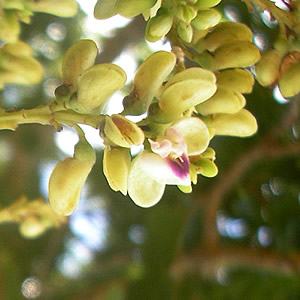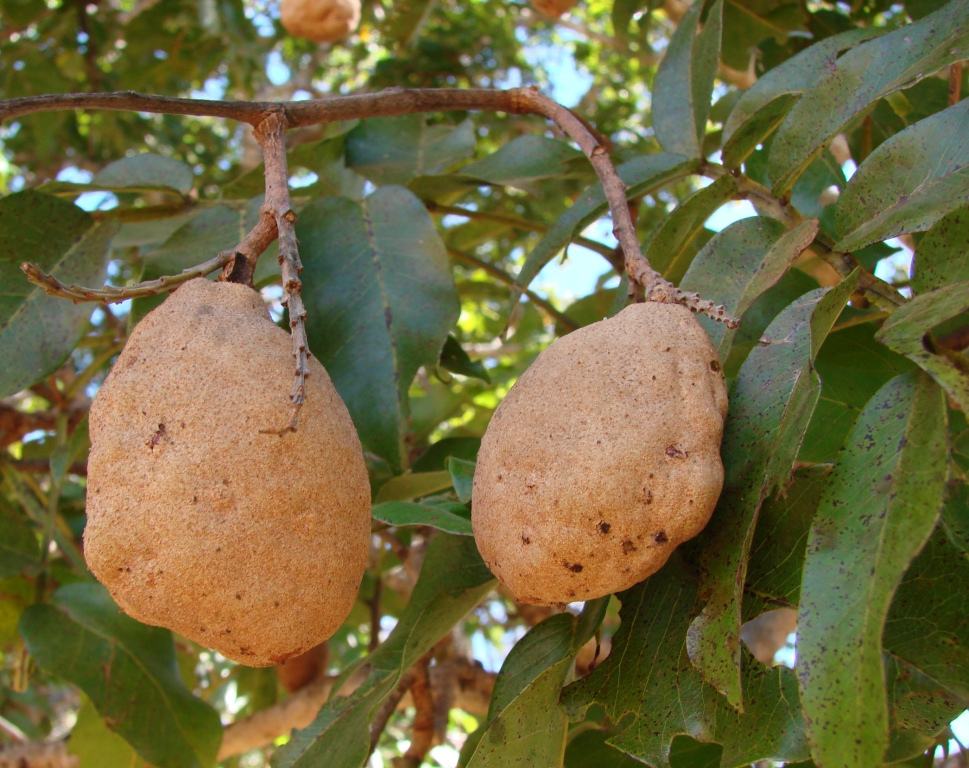The Baru Tree (Dipteryx alata) is a fruit-bearing and ornamental tree, native to the cerrado and transitional zones between it and the Atlantic Forest, known for its delicious almonds. It reaches heights of up to about 25 meters (82 feet) and is found in Brazil, Paraguay, Peru, and Bolivia. Its trunk is robust, reaching 70 cm (27.5 inches) in diameter. Often it is short, branching a few meters (approximately 10 feet) from the ground. The bark is corky, scaly, thick, rough, and slightly fissured, brown in color, with a yellowish heartwood. The crown is rounded and dense.
The leaves are compound, alternate, with oblong, glabrous, dark green leaflets. The inflorescences appear in terminal clusters from mid-spring to early summer, with delicate greenish-yellow flowers with a pink center that resemble butterflies. The fruits that follow are fleshy drupes, with a brownish skin, sweet pulp, and stony endocarp, very hard to break, enclosing a single oily seed, brown in color and ellipsoid in shape.
Baru nuts (the seeds) are a growing success, especially with the increasing appreciation of cerrado’s riches. They have a flavor similar to peanuts and cashews and are of great nutritional value, with high protein content. There are numerous culinary applications, replacing other almonds in a similar way, being used raw, roasted, sautéed, or in the form of flour. The baru nuts can be used to make candy, butter, ice cream, pesto, chocolate, cake, cookie, etc. The sweet and aromatic pulp can also be consumed in natura, or in the form of jams, juices, and liqueurs.

The baru tree is an impressive and beautiful tree that, in addition to providing ample shade, rewards us with its unusual flowering and delicious, nutritious fruits. It is an interesting option in landscaping projects that aim to enhance the native flora, combining beauty and utility. It is a relatively hardy species that requires minimal care and has relatively fast growth, although it may be somewhat irregular among individuals.
Use baru trees in areas with plenty of space, such as parks, squares, and large gardens. Due to the high demand for its high-quality wood, as well as the destruction of its habitat and the use of its seeds for human consumption, the baru tree is threatened with extinction.
It should be cultivated in full sun, in fertile, well-drained soil enriched with organic matter and regularly irrigated in the first year of establishment. Once well-established, baru trees can withstand periods of drought without trouble. They prefer dry soils over heavy ones with poor drainage.
Propagation is done by seeds, which should be collected from ripe fruits as soon as they fall to the ground or by shaking the branches. The fruits should be depulped, and the endocarp broken to remove the seeds. Germination occurs 7 to 15 days after planting.


